North of Kendal, where the winding Tebay road drops towards the Lune Gorge, you will often see a scattering of black shapes high up on the steep fellside.
The shapes are the fell ponies of Roundthwaite Common, some of the toughest animals in Britain. The ponies spend the whole year out there. Semi-wild, they have little contact with their owners.
In the winter of 1947, under unusually heavy snow, a small herd got stuck in a distant hollow, cut off from their owners. Seven weeks later, they emerged – thin, but alive. The story is testament to the hardiness of this native breed that has survived on the fells of Cumberland and Westmorland since pre-Roman times.
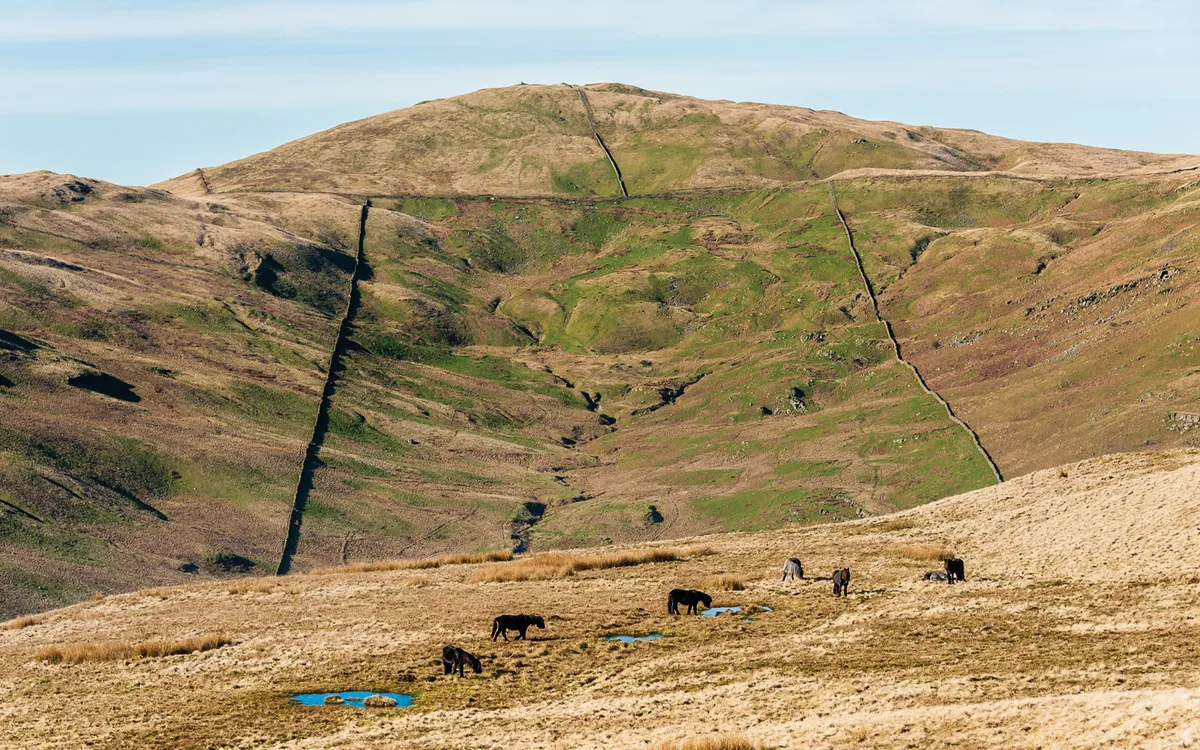
The Roundthwaite ponies forage high on the fell-tops, miles away from human contact. They often ignore the hay left lower down the fell by breeder Bert Morland, owner of the Lunesdale Fell Pony Stud. The ponies thrive on surprisingly little, grazing on grasses and mosses, scraping away snow with their hooves, if necessary, to reach them.
“We keep an eye on them,” Bert says. “We have to – it can take a pony bred in the lowlands a couple of years to acclimatise to life in the hills.”
For the herds living in the high fells, breeding is timed to ensure that a few weeks before the mares foal, the spring grass is growing, enabling the mares to put on condition. The herd is brought down to the farms and the yearling colts sold on, while fillies with good fell pony characteristics are kept for breeding.
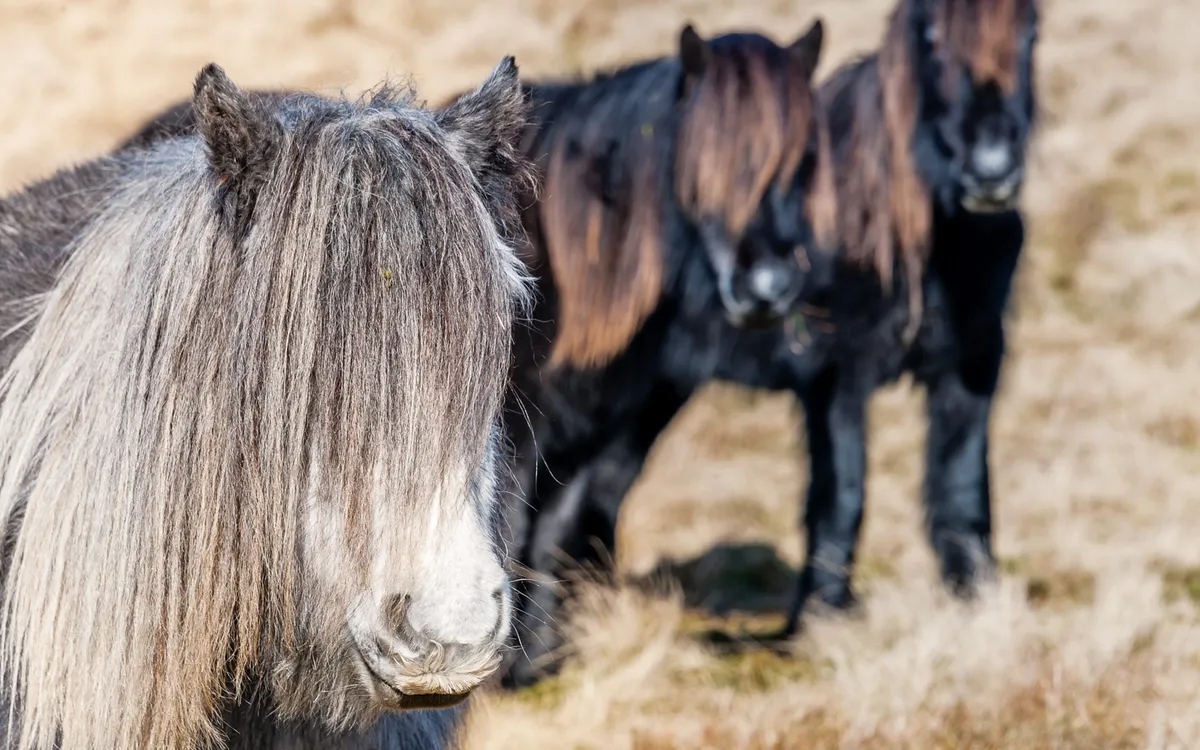
The most obvious of those characteristics is their long manes, which sweep down over not just their eyes but the entire length of their faces. Their tails too are long and, with the ponies standing less than 14 hands high (less than 142cm to their shoulders), tend to trail along the ground. Traditionally the ponies are black or dark-brown tinged with russet or, less commonly, grey. Breeders try to keep other colouration to a minimum; a white star on the forehead or a little white below a hind fetlock, but larger white markings are discouraged. The lower legs and fetlocks are feathered and in winter their coats become shaggy; longer wisps hang from their bellies while their backs are often matted with mud and the effects of rain.
These are intelligent animals, endowed with a steady temperament. Tom Lloyd, a fell pony breeder whose herd lives on the fells near Lake Windermere, travels by bow-top wagon to the Appleby Horse Fair each summer. The journey takes five days with a single pony pulling the wagon and a second trotting behind. Tom travels with his father Walter – one of the first people to recognise the need for the fell-dwelling herds to be preserved.
“The breed isn’t threatened,” he tells me. “There are plenty of people keeping them in the lowlands for riding and showing. It’s their inherent hardiness that’s at risk.”
I ask what it’s like to travel by horse-drawn vehicle on today’s roads.
“They need that steady temperament to cope,” Tom says. “And they cope well. It’s another important characteristic of the breed: they’re strong but very good natured. They’re all individuals too.”
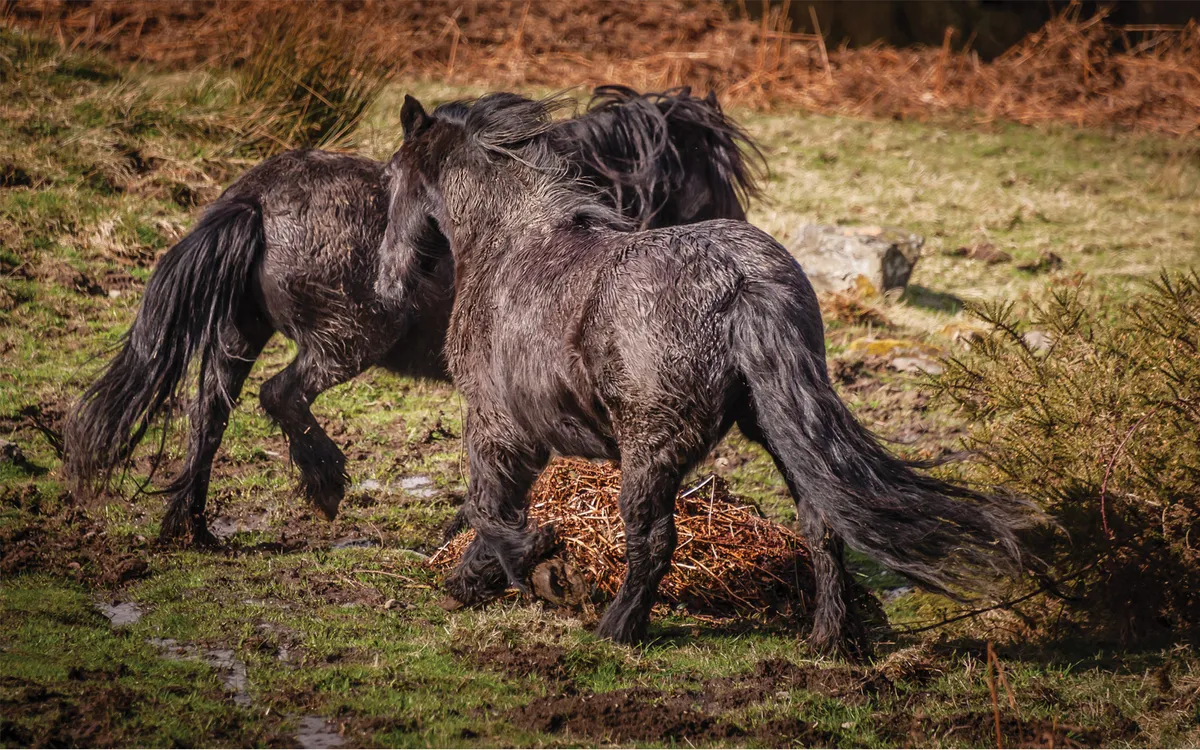
We follow a track up onto the fellside where the ponies graze between rocky outcrops and ancient oak trees. Tom calls them and they saunter over. Their manes are knotty, woven with bracken stems. As we stand in their midst, they nudge Tom’s pocket trying to get at the grain inside. Occasionally, one takes umbrage at another’s prying and aims a half-hearted kick at its rival, before making its own bid to get at the grain. But soon each pony gets a treat and rub on the neck or forehead.
A rare breed
The breed originated on the border between England and Scotland, with the introduction of Fresian horses by the Romans. From this stock, the fell and the now-extinct Galloway and fen ponies were derived. It’s thought that the breed was first brought into domestic use by the Vikings, replacing oxen for ploughing, and while the working ponies were kept on farms and in villages, the breeding stock always remained out on the fells. This deliberate husbandry ensured the breed’s hardy characteristics survived through the generations. The first pedigree records began in the late 19th century, with show classes for fell ponies first held at Hesket Newmarket in the late 1800s. It’s thought that, at present, there are between 7,000 to 8,000 fell ponies worldwide.
The title of a film made by Tom Lloyd, Endangered Species, refers not to the breed, but the older generation of upland sheep farmers who are becoming less able to maintain the pony herds in the hills. Tom is one of few younger people breeding Fell ponies.
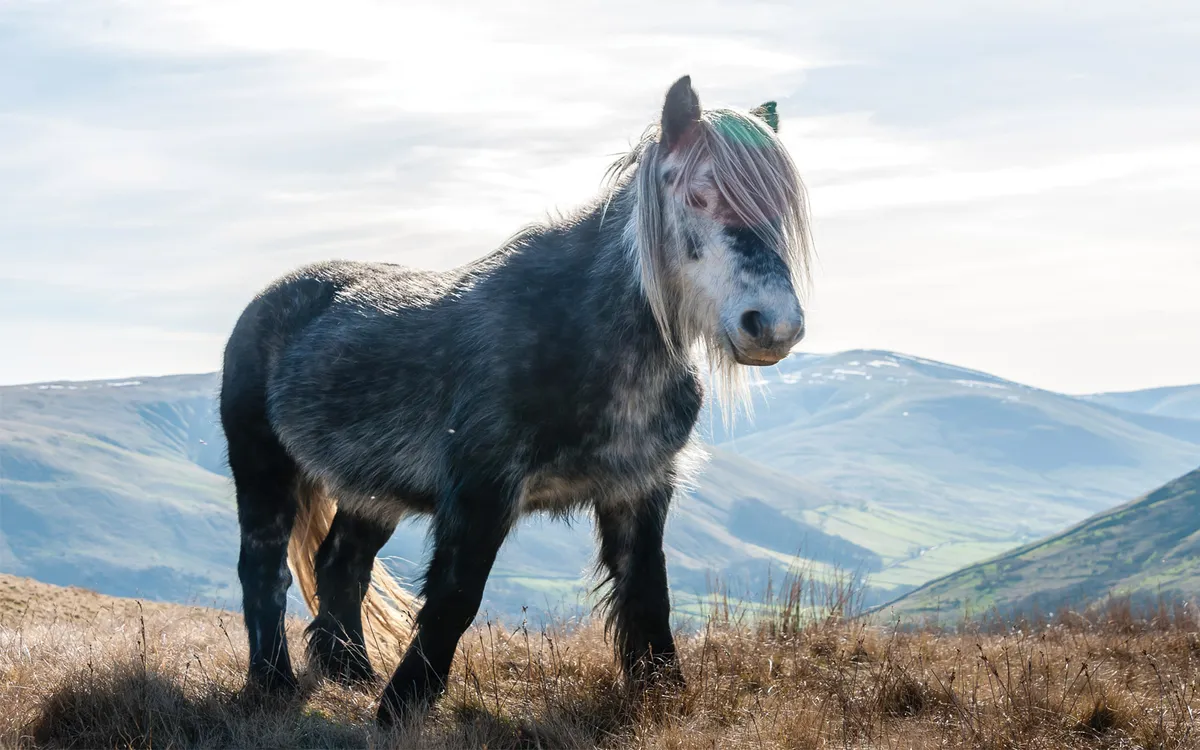
Tom’s land has its own links with the breed’s past; what is today a way-marked bridleway was once an ancient packhorse route. The fell pony was a stalwart of trade, sure-footed, resilient, and with a great capacity for work. Plus the fell’s smaller stature made loading it up with goods easier. The Lake District’s mountain passes were rough-hewn trade routes along which wool, foodstuffs and locally mined ores were carried. Packhorse trains regularly carried Kendal’s famous woollen goods to London and beyond, each animal covering up to 240 miles in a week. In Kendal Museum hangs The Belle Mare, a portrait of the lead pony of a packhorse train, wearing a collar hung with bells so ponies further down the trail could hear and follow the safest route in low cloud. There’s also evidence of fell ponies being used in the Middle Ages to deter wolves from attacking flocks of sheep and fell pony postal services remained a lifeline for remote Lakeland communities until well into the 18th century. They were even used as pit-ponies in the north-east until well into the 20th century.
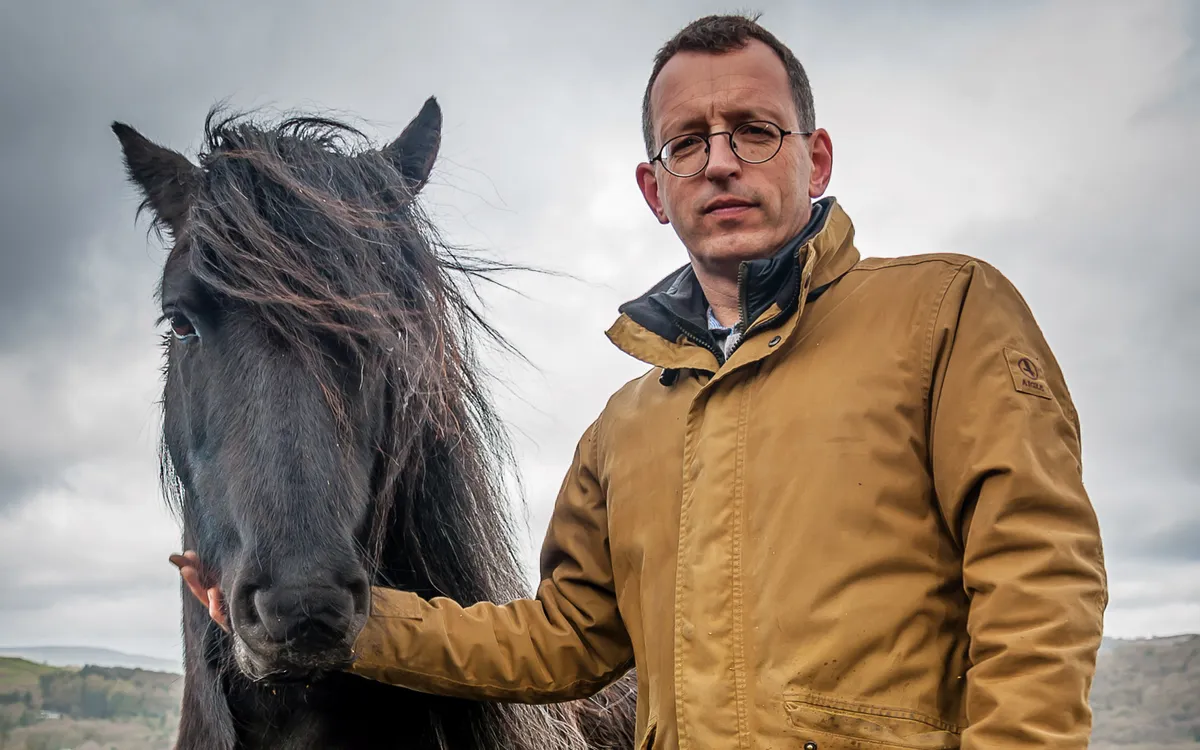
Recently, the breed has been given a new lease of life as conservation grazers. Sheep move slowly, close cropping everything in their path, but conservation grazers eat more selectively, creating an open sward to allow plants and trees to germinate and regenerate. The ponies’ large hooves break up the ground, helping seeds to develop while increasing plant fertility and diversity. On the Helm, a distinctive ridgeback hill that lies near Kendal and is managed by Friends of the Lake District, Nicola Evans’ fell ponies are helping the landscape to naturally regenerate. One of our most historic native breeds is bringing back a greater variety of insects, birds, mammals as well as plants. Long may the fell pony remain, gracing our harshest uplands.
Who rides a fell pony?
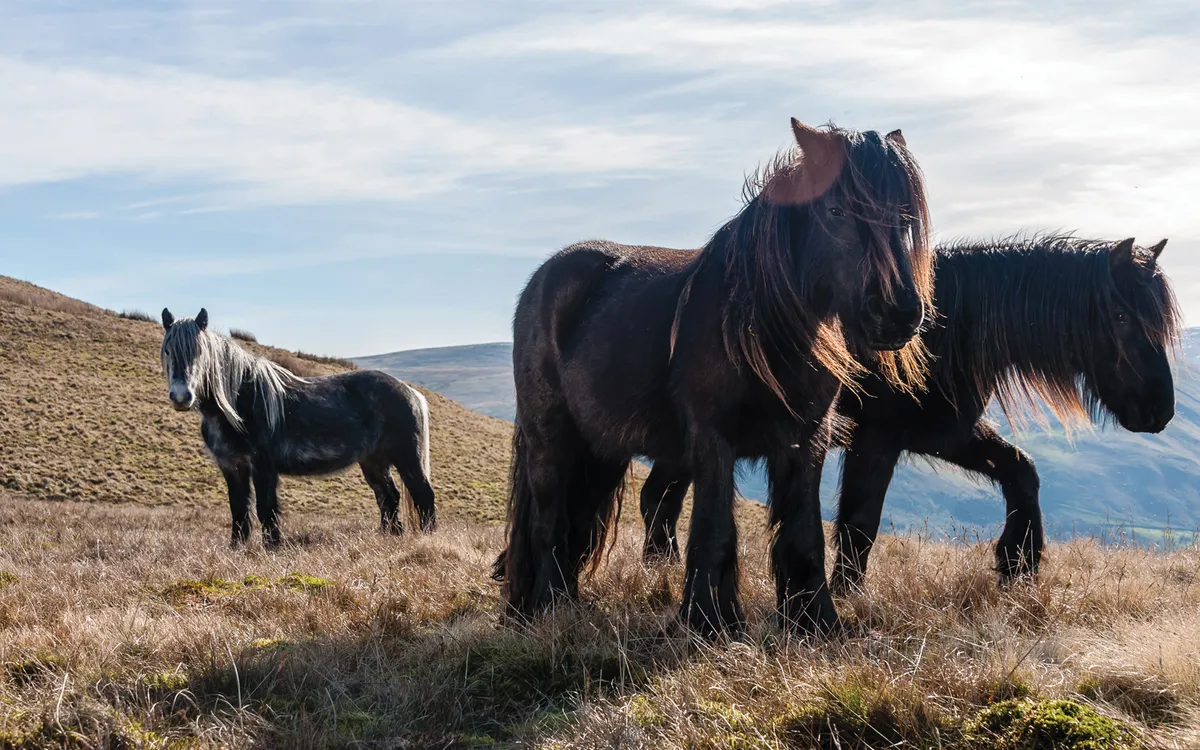
A fell pony makes an ideal all-round family pony, suitable for adults and children. It has a fast and easy pace, making it a pleasant, comfortable and sure-footed ride.
It is a favourite breed for trekking activities and frequently used by the Riding for the Disabled Association. The breed is also popular in recreational and competitive driving events, and fell ponies have also been ridden by Her Majesty, Queen Elizabeth II.
